If you look up the verb “to animate” in the Oxford Dictionary, you’ll find two definitions:
“To animate something or someone means to give (a film or character) the appearance of movement using animation techniques.”
But the second definition might sound more lively:
“Describe the action as the capacity to bring to life.”
To portray the mentioned “appearance of movement”, we need to create a sequence of images -drawn, painted, or produced by other artistic methods- that slightly differ from one another. The chronological display of the previous images will produce the illusion of shape change and motion.
Here is a brief 2D animation break-down that gives you a broad idea of the 2D animation production process:
Is 2D Animation DEAD?
First, let’s bust one old and common myth. 2D animation is a versatile medium that’s finding its way into every kind of entertainment and media these days. Whether in TV shows, indie video games, feature films, advertisements, mobile apps, and websites, 2D animation is here to stay.
Just take a look at shows like “Rick and Morty” and you’ll immediately realize how the combination of a good story and well-developed 2-dimensional animated video wins the game. What’s more, 2D is still being used by marketers to promote their products or services. We’re well aware that when it comes to such a diverse medium, people tend to have so many questions that are left unanswered.
In this blog you’ll find everything you need to know about 2D (traditional or hand-drawn classic) animation, how it’s created, how you can be a 2D animation artist, and useful information that could help you become a better 2D animator. If you have any other questions, drop us a question in the comments section and we’ll provide you with a complete answer.
Without further ado, let’s start the adventure!
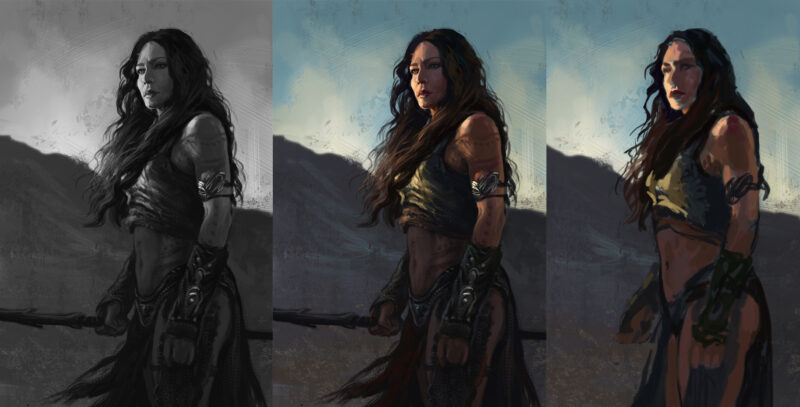
What is 2D animation?
2D animation occurs when we combine different pictures of different heights and widths together, which creates an illusion of movement in a two-dimensional world without any depth. Now you might ask why we call this 2D animation. That’s because width and height are the only two variables and dimensional elements. There are different genres of animation which we’ll cover in the next section.

There are various ways of breaking down 2D animation styles, but in the most basic way, it all comes down to two subcategories:
Traditional animation
Traditional animation (also known as hand-drawn animation or classical animation) is an animation technique where all the frames used to create the illusion of motion are first drawn on paper and, consequently, done by hand.
We Bring
2d Animation to Life!
Modern animation
Unlike the traditional method, modern 2D animation is all about computers and their ability to take things further when it comes to creating an animation. Along with that, different 2D animation software is developed which gives the option of creating characters, and backgrounds, and animating them all together.
Read more:
Professional 2D Animation Services
What Is the Difference Between 2D and 3D Animation?
There are many similarities between 3D and 2D production. The stages of development and part of the pre-production are practically identical. The design stages, development of expressions and lip-sync, storyboarding, scene planning, and, more than anything else, the controlled production circumstances (the fact that everything happens within the production studio) are very much the same. Recruiting, contracts, budgeting, and scheduling are also identical processes in both 2D and 3D productions.
The real differences emerge when the main production phase begins. The computer takes over from paper and pencil, and thus the process requires a different production pipeline. This process begins with the construction of 3D computer-generated models of all characters, props, and sets.
For example in the 3D animation pipeline, we have different stages such as rendering, 3D modeling, and texturing. However, in the 2D pipeline, these are mostly done by artists. If you want to know more about the workflow of 3D animation, check out our guide on the animation production process.
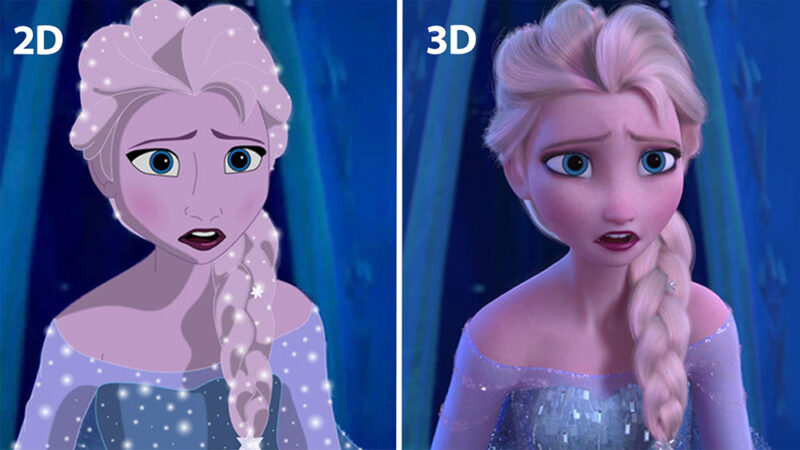
Where is 2D Animation Used?
Applications of 2D animation are many. Here are the main divisions:
- Product commercials (animated ads)
- Educational films
- Feature films (theatrical film longer than 60 minutes)
- Music videos
- Web animation
- Original animated video (program created for home video playback videotape, laser disc or DVD)
- Short feature films (theatrical film longer than 30 minutes but shorter than 60 minutes)
- Short or experimental subjects (theatrical or television film shorter than 30 minutes)
- TV series (at least 30 minutes in length, including a segment
- TV specials (an hour in duration, including segments)
- Television bumpers (introductions/endings of program segments, only a couple of seconds long)
- Video games
- Video game trailers
- Architectural animation
- Medical or other industrial films
- Multi-path movies
- Logos, intros, and credits for other structures’ avatars, banners, and web advertising
- Mobile phone images
What Are the Different Types of 2D Cartoons?
Sometimes, we’re not only making 2D animation for the sake of entertainment. Versatility, low cost of production, and high engagement rates are among the reasons why a lot of marketing and branding videos are done in 2D. Let’s take a look at the different uses of this kind of animation in the realm of marketing.
- Computer animation
Computer animation, also called CGI animation, is the technique used by generating animated images with computer graphics. Computer animation is broken down into two categories. Computer-assisted animation is when traditional animations are computerized. On the other hand, computer-generated animation is one designed solely on the computer system using animation and 3D graphics software.
- Stop Motion
Stop-motion animation -or stop-frame animation- is a cinematic process or technique used to make real-world objects appear as if they were moving. Those objects are physically manipulated and photographed every time after being moved between frames. When the sequence of images is displayed rapidly, the objects are “brought to life”.
- Motion Graphics
Sometimes brands don’t need a character or story-driven animation. Instead, they just want to use graphics and text for animated logos, explainers, and titles. In this case, motion graphics are a perfect choice. The skills required to create motion graphics are different from those required for other types of animation as motion graphics don’t require a knowledge of body mechanics or acting. One of the key services of Commercial animation studios is motion graphics for product videos.
- Whiteboard animation
Whiteboard animation consists of simulating black-line graphics drawn on a white background, illustrating the concepts or ideas in play. The popularity of these types of videos lies in their effectiveness, as the dynamic graphics and animations do a great job of delivering complex messages while keeping the audience engaged. Using a streamlined style that results in a straightforward and to-the-point finish.
- Infographic
If you have a great deal of information on hand and a short amount of time, animated slides or infographic animations are a great way to do both. Complex subjects and descriptions that need illustrations and graphs are also what infographics shine.
Now, let’s learn more about how animation 2D is created. The process consists of 3 main phases: pre-production, production, and post-production. Let’s see what’s included in each of them.
Before we move on, you may be interested in learning about different 2D and 3D styles used in making commercial videos.
How About 2D Anime?
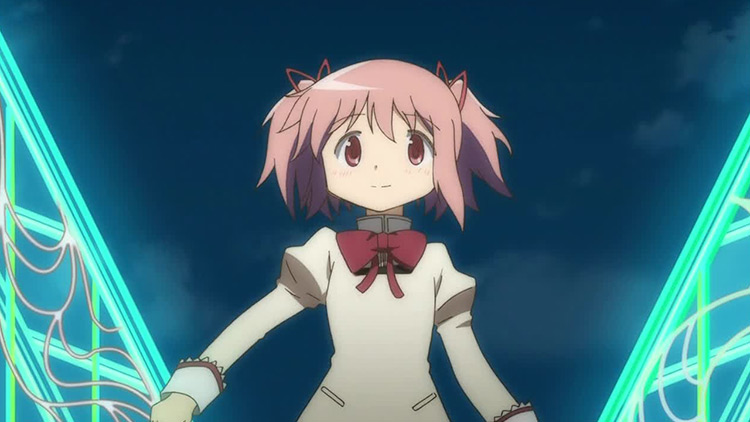
We usually refer to Anime as a hand-drawn animation style that is originated from Japanese artwork. It’s not that much different from traditional 2D cartoons, however, In Anime the main characters have large doe-like eyes. In addition, Anime is the prevalent style in Japanese comic books or manga. Examples of Japanese anime include:
- Fullmetal Alchemist
- Darker than Black
- Kill la Kill
- Gurren Lagann
- Trigun
What Is the 2D Animation Creation Process (Step-By-Step Guide)?
Now we’re going to explain and break down the workflow of 2D animation. However, it’s worth mentioning that every animated movie has been made in a different way, with different techniques and devices. There is no “correct” or “unique” way to animate and the steps explained below aren’t always followed in the same order.
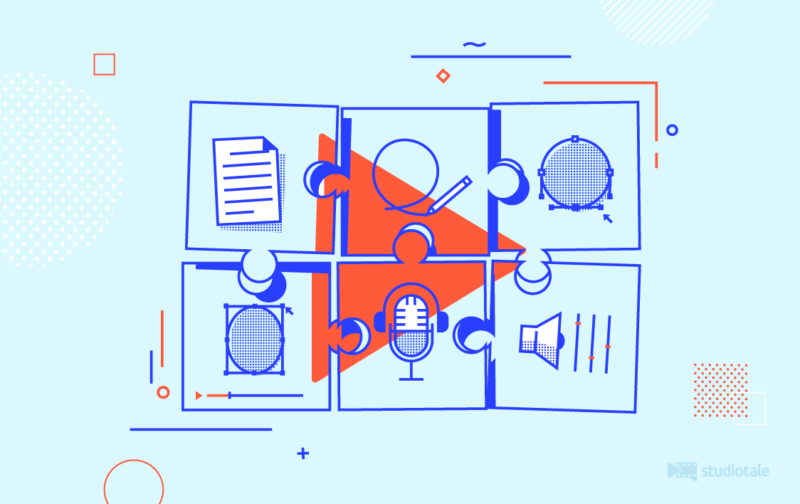
What we’re talking about here is just the 2D animation production process that is largely practiced in big animation studios (Disney, Dreamworks, Ghibli, etc.)
Check out our brand character service page to see how we are helping brands enter the metaverse using a brand mascot.
We have specifically broken down the production process of 2D animation into 3 parts:
- Pre-production
- Production
- Post-production
Each of these stages consists of different mini-stages that are the building blocks of a complete animated work.
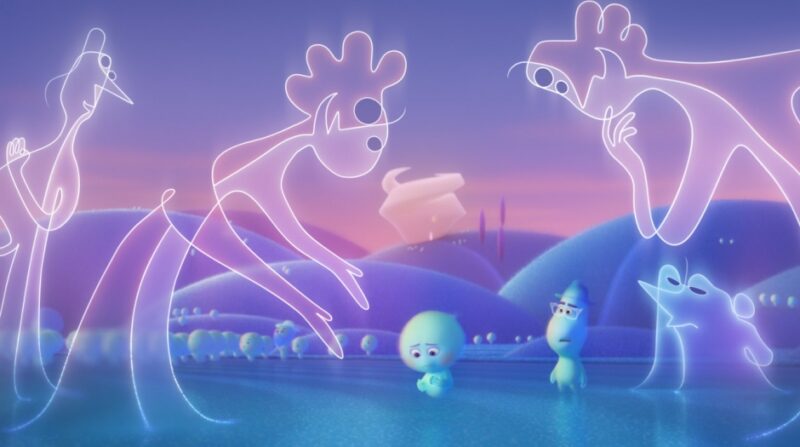
2D Animation Pre-production Stage
1. Finding inspiration
To make an animated movie (or any movie in general) you need to think of a story first. However, trying to come up with a good story can be really difficult sometimes. The story is the most important part of any animated movie. If the animation isn’t the best but the story is great, you have a good movie; but when it’s the other way around, then the movie is worthless.
To come up with a good story you need to find inspiration. How can you do that? You just have to observe what is around you. Inspiration can come from everywhere, a movie, a song, a poem Use anything from your own life to get inspired. Any person you’ve ever met, any place you’ve ever been to, and any experience you’ve ever had might make all the ideas in your head click and create a story.
2. Developing an idea
It’s now time for the director and producer(s) to get together and think of the changes we want to add to the story we have chosen to animate. We propose different ways to add depth to it, the message we want to transmit, the main plot, etc. We try to make them more complex and appealing to the contemporary audience.
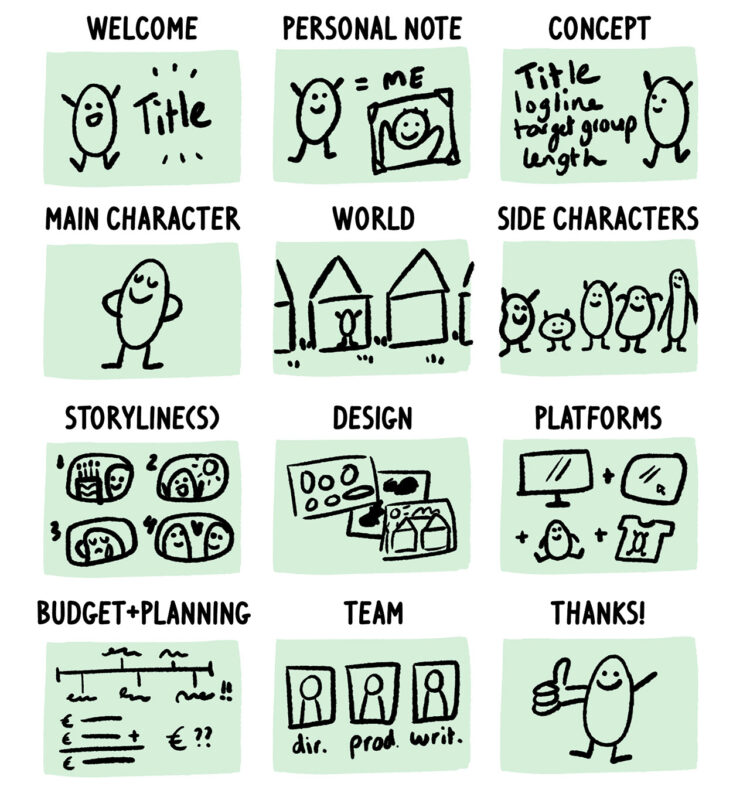
3. Finalizing the script
In this stage, all the dialogues of the animation are written. When writing, it is important to take into account the audience of the animation that is going to be addressed. It’s worth mentioning the script evolves a lot during the creation of the movie and changes many times until we get the final one.
4. Scheduling the production
Just like the way you prepare your suitcase before a trip and make sure you have all you need to make the journey, in the same way, you need to plan ahead when and how you’re going to start producing your animation project. Although it can sound very boring, it is essential to organize the project and prepare everything before starting to animate. Some of the things that are worth planning are:
- Delivery date
- Preliminary data
- Crew plan
- recruiting
- budget
2D Animation Production Stage
5. Designing
Once all the scheduling is done, we start designing the characters and backgrounds for the animation which comes down to two sub-categories:
-
- Character designing
When it comes to designing characters, everyone contributes with their ideas. Every animator takes a pencil and a piece of paper and starts sketching different designs of the characters over and over again. Finally, they come up with a reasonable character design that all the team is into. Sometimes artists outsource this stage to character design studios that are able to deliver fast and reliable assets for their projects.
Check out our guide for designing a brand character to see how brands utilize the power of design to make a deep relationship with the audience.
- Location designing
Animators also have to design the backgrounds of the movie, even if it is just the bedroom of the main character, a school class, or a whole village, everything must be planned. When designing backgrounds, they sometimes use photographs they had taken during the research process. Other times, they just draw from their imagination.
6. Composing the theme songs (optional)
This part of the process consists of composing the songs that are going to be sung by the characters. This step is only applicable when talking about a musical film, not every animated movie has sung in it. When composing, musicians tend to add easy and catchy songs so that people remember the lyrics and they get stuck in their heads. Just take a look at some of the best Pixar movies like COCO in which a type of song is sung by the characters.
7. Storyboarding
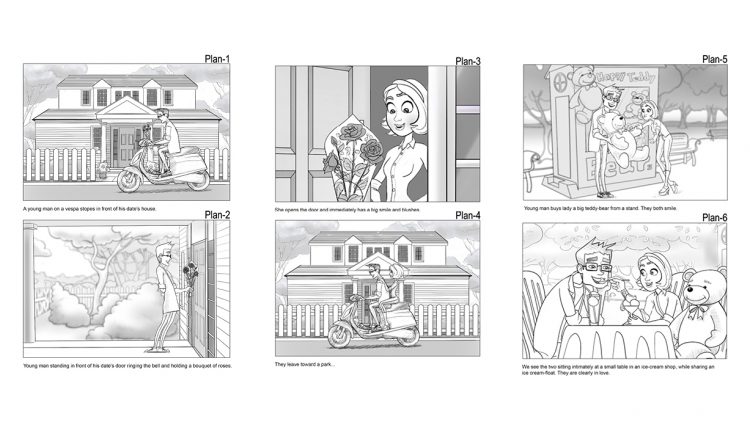
Storyboards are sketches similar to comic books that follow the action of the script and show how the characters will move in every scene. To plan the storyboard, animators use a bar sheet to
organize the scenes. A bar sheet (or exposure sheet) is a table that contains the breakdown of the action, dialogue, and sound of every sequence.
It determines exactly which posses, drawings, and movements animators will have to draw later. It is organized in a similar way as a music pentagram and it is usually smaller than an A4 paper. Once the bar sheet is completed, storyboard artists begin to draw everything.
Storyboards don’t have to be as clean as the final animation, they are just rough sketches. The character’s features don’t have to be very exact either. However, there are storyboards that are very well elaborated and even colored. It depends on
the artist who draws it.
8. Concept art
In doing concept art, We develop the style, tone, color, and overall artistic approach to each and every sequence.
Concept art will not be in any part of the movie, it just helps the animators to get inspired and know how the movie will finally look. Everything has to be designed, from the major characters to the smallest of props. They make thousands and thousands of drawings, paintings, blueprints, sculptures, and models to design everything.

9. Voice recording
When the concept art is already finished, it is time to record the voices of the characters. This process can be divided into three steps: casting, character presentation, and recording.
10. Animating
This is when animation truly begins. All the storyboards and the planning is done, so now it’s time to let the animators do magic. Animators are divided into two groups, the key animators (or main animators) and the inbetweeners.
- Key animators
Every character is assigned to one main animator, usually, the one who designed them, that will draw all the scenes where the mentioned character appears. Key animators draw the frames that have the essential poses of the characters without taking into account the fluidness of the movement.
- Tweening artists (Inbetweeners)
The inbetweeners are the animators that receive the mainframes the key animator has created and fill them with more frames to make the movement flow and
look real. The average number of frames a second has to contain is 24 f/s.
The procedure of filling the mainframes is called tweening.
They have to keep in mind that the characters must do simple human things like breathing and blinking, etc. They have to give them the feeling of having flesh and bones. Tweening is also a difficult process because everything has to look the same, unified.
To see if there are any mistakes in their animation, they put all the drawings together in a videotape called a pencil test. It is a preliminary version of the final animated scene, and sometimes they even add the dialogue to see if the lip-sync is
done correctly
2D Animation Post-production Stage
11. Inking and coloring
When all the scenes have been animated, they are taken to the inking department. That is where they pass the pencil sketches into celluloid. A celluloid is a thin, clear sheet of transparent plastic. There, they ink or photocopy the outline of the drawing onto a cel, depending on if they are doing it traditionally or digitally.
Suggested Article:
How Character Color Palette Can Make or Break a Character Design
Originally everyone inked the sketches by hand, and they could spend a lot of hours with just one of them. Luckily, with the invention of the computer, the process has become a lot faster and easier.

12. Background
The backgrounds are the sets where the action of each animated sequence takes place. As well as the previous step, they can be done by computer or by hand. Traditionally painted drawings are usually made with gouache or acrylic paint, though some animated productions also use watercolor and oil paint.
13. Visual effects
Sometimes, a sequence requires some type of animation that would be very difficult to do by hand and that is when we use computer effects. They are used for many different things. Animators use the computer when they need to animate a scene with a huge crowd or with some kind of magic effect or fire on them.
By animating the background characters with a computer, we are able to save extra work and time. Using the computer, animators change the angle of the camera, edit possible mistakes, correct the lighting, the speed of movement, the atmosphere of scenes, etc. They give the final look to the movie. They also use the computer to add the initial and ending credit.
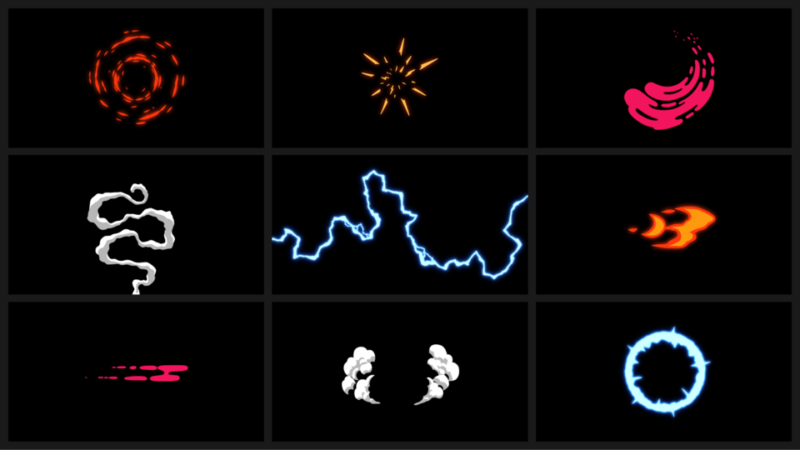
14. Sound design
This is the last part of the animation process. The sound designers create and record sound effects and ambiance (footsteps, clothes rustling, doors opening,…) to create the textures and layers of sound that enrich the story. Nowadays they are created digitally but at the beginning of the animation, sound designers had to make the sounds they needed themselves. In Snow White, they recorded the sounds of broken dishes, animals, doors knocking, etc. because they didn’t have another way to do it.
After that, the background music is composed. Background music reflects the way the main character is feeling at the moment. That is why, depending on the type of scene, the music will be fast or slow-paced.
Post-production Phase Wrap-up
Then, the dialogues recorded before are added making them coincide with the lip movement of the characters. Finally, the dialogue, music, and sound effects are assembled on the sound
mixing stage. They add audio levels, equalization, perspective, and treatments (Echo, TV, or radio sound…) as tracks, and they are mixed into the final version of the movie.
Frequently Asked Questions About 2D Animation
Let’s take a look at some of the most common questions we get asked about 2D animation all the time:
-
Is 2D animation harder than 3D?
First, we have to define what we mean by “Harder”. In 3D animation, the computer takes over from paper and pencil, and thus the process requires a different production pipeline. This process begins with the construction of 3D computer-generated models of all characters, props, and sets. This whole new set of steps requires more time and energy to complete the project, therefore you can say 3D animation is a more time-consuming project than that of 2D animation.
2D animation is more artistic, whereas 3D animation is more technical.
-
Is 2D animation a good career?
Given the fact that the world of entertainment is on the rise, more people will need to create animation to keep up with the demand. So the interest is pretty high and if you hone your skills as an animator well enough, you have a pretty good chance of rocking the world!
-
Is 2D animation cheaper than 3D?
The price of an animated project depends on various factors such as duration, quality, target audience, and the number of people to complete the project. therefore, before thinking that 3D animation is more expensive in terms of time and money, consider that if any of the mentioned criteria in a 2D work outweighs the ones from 3D, the price of the 2D animation could even be higher than 3D.
-
Looking for 2D Animation Studios?
We pride ourselves on our creativity and expertise, offering a comprehensive range of services, from concept development to final animation. Our talented team of artists and 2D animators is dedicated to bringing your vision to life with stunning quality and efficiency. Whether it’s for TV shows, commercials, or digital content, Dream Farm Studios has the experience and passion to deliver outstanding 2D animation projects.
You may also be interested in:
2D Animation in 2024
As we navigate through 2024, 2D animation continues to evolve, blending traditional techniques with cutting-edge technology. The rise of hybrid animations, combining 2D and 3D elements, has opened new creative possibilities. Tools like Adobe Animate and Toon Boom Harmony are now more powerful, allowing for more efficient workflows and higher-quality outputs. Additionally, the popularity of streaming platforms has created a surge in demand for 2D animated content, making this an exciting time for both animators and audiences alike.
2D Animation With Dream Farm Studios
If you’re looking for a 2D animation studio, finding the correct partner that matches all your needs can be challenging. Businesses and individuals can choose a 2D animation studio by checking their existing work examples, price policy, capacity, volume of work, and many other factors.
Now that you know everything about the 2D animation production process, you can head over to our in-depth guide on the 3D CGI animation pipeline.

Arash Naghdi
Arash is the equivalent of Buzz in Toy Story when he goes to infinity and beyond, but never comes back! responsible for our blog and content marketing efforts, he always delights the audience with his tenacity and passion in creating the extraordinary.


Hello there, thank you for your great article, I’m a visual art student and I found your articles so well-organized and to the point. I have one question though, does 2d and 3d animation different in case of the production process or pipeline?
It’s great to know you found value in this post. In regard to your question, take a look at our guide on 3d animation pipeline.
Such a great guide on how to create 2d animation. Do animation studios have separate pipelines for 2d and 3d animation? what are the similarities?
Thank you for the kind words Kates, 2d and 3d production deffer in some key aspects. You can check out our in-depth article on 3d animation production process to get a feel for the difference.
This is simply one of the best 2d animation production process breakdown I’ve ever read, Good job Dream Farm Studios
Thanks, Theodore, really appreciate it.
Hey this article is so well written I have to recommend it to my friends.
I really like how you break down the process of 2d animation production and add some other valuable information to support it. great job
2d animation works on 2d axis and 3d works on 3 axis.
That’s a great impression.
you did a great job. keep doing
Thank you, Saira, thrilled to hear that.
That’s great! you have given the complete insights I was looking for.
You’re most welcome Sadia.
I’ve been working on animation for a while now still feel like i’m missing a lot things. this is very helpful. thanks a lot.
That’s great to know Ayaz, glad we helped.
one of the best blogs about 2D Animation and the best 2d animation production process.
Thanks, Amir, we’re thrilled.
Great article
Very helpful.
One question I have- what about compositing? You didn’t mentioned this role so I wonder if you consider it as the role of the Visual effects or is it something else?
Would be great if you can elaborate 🙂
Hello Shay, that’s a great question. You can learn more about composting in 3d animation pipeline.
I’m starting a TV Show in June 2023, and i needed these steps, thank you.
That’s awesome news, Sebastian! Good luck! 🤞😉
Detailed and thorough resource on 2D animation. We deal in 2D drawings and 3D renderings for the architecture industry, but we do not have expertise in 2D animation. After reading your content on 2D animation, it is very easy to understand and learn on this topic. Thanks again for writing this post.
Great to hear, Sandy! If you’re interested, here’s the link to our blog about 3D animation: https://dreamfarmstudios.com/blog/3d-animation-pipeline/#:~:text=A%203D%20animation%20pipeline%20is,in%20a%20pre%2Ddetermined%20timeframe.
More blogs here: https://dreamfarmstudios.com/blog/
I found this blog very informative, Keep up the good work.
Very nice
This is an exquisite article but would like to keep in touch and be able to learn more about the animations
We can do 2D animation If our drawing skill is not good
Hi Team, I am beginner in animation. Can you please guide so that i can capable to work in your org
Hi Anuvesh! It’s great to hear you’re interested in animation. Learn animation software, practice regularly, and build a portfolio. When you’re ready, apply for our job (Our Email: [email protected]). Passion and dedication are important to us. Best of luck
This insightful article on 2D animation is a comprehensive guide, seamlessly breaking down the intricate steps of the production process. It’s a valuable resource, bridging theory and practice seamlessly.
Thank you for your feedback.
Yes I like reviewing
thank you for your great article
Awesome, I really found this very educative. Thank you
You’re welcome Emediong ! Glad you found it informative.
Excellent 👍👏😆
I’m excited to be one of this training. Thank you
The breakdown of 2D animation is spot-on, highlighting its timeless appeal and versatility in storytelling. It’s fascinating how 2D animation continues to evolve while retaining its charm.
Can you provide me 2d traditional animation videos
Sure! To see some examples of 2D traditional animation, you can check out this link:
Creative School
You’ll find some of our 2D animation projects here. Hope it helps!
Great insights, I really appreciate the depth of information shared in this post. The points you’ve made are thought-provoking and offer a fresh perspective on the topic. Looking forward to reading more of your content keep up the great work.
Good👍